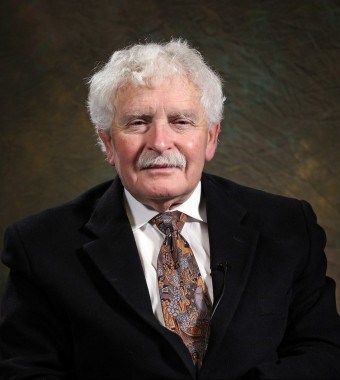Long-time Cleveland Clinic leader Bruce Lytle, MD, becomes Chairman of Cardiovascular Strategic Development
Bruce Lytle, M.D., a cardiothoracic surgeon who until recently served as chairman of Cleveland Clinic’s Sydell and Arnold Miller Family Heart & Vascular Institute, has joined The Heart Hospital Baylor Plano†. He will serve in a newly created role: chairman of cardiovascular strategic development and planning for cardiovascular medicine and surgery.
“Based on Dr. Lytle’s previous experience of leading an internationally recognized heart and vascular institute, he brings a unique combination of talent and expertise to the leadership of our institution,” said Mark Valentine, president, The Heart Hospital Baylor Plano.
Dr. Lytle will work with Valentine and key physician leaders to help THHBP provide patients quality cardiovascular services, to maintain quality outcomes that exceed national standards and to continue expansion of the heart hospital’s medical and geographical footprint.
Dr. Lytle served as chairman of The Sydell and Arnold Miller Family Heart and Vascular Institute at Cleveland Clinic from 2007 to 2015. He joined Cleveland Clinic’s thoracic and cardiovascular surgery department in 1978 after receiving his medical degree from Harvard and completing residencies at Massachusetts General Hospital. While chairman of Cleveland Clinic’s heart and vascular institute, he oversaw 25 heart and vascular surgeons who performed more than 7,600 surgeries a year and nearly 100 cardiologists in the heart center. He is credited with the conception and growth of the heart center’s national affiliation program.
In December 2015, The Heart Hospital Baylor Plano received a three-star quality rating, the highest rating possible, from The Society of Thoracic Surgeons (STS) for coronary artery bypass graft surgery (CABG), aortic valve replacement surgery (AVR), and aortic valve replacement surgery + coronary artery bypass graft surgery (AVR + CABG).
“The three-star rating is a rare accomplishment. Less than one percent of hospitals reporting to the STS database accomplish this rating in all three categories,” explained Dr. Lytle.
The Heart Hospital Baylor Plano, part of Baylor Scott & White Health, is the sixth largest cardiac surgery center in the United States in heart surgery and fifth in the nation for heart valve surgery. The hospital ranks first out of approximately 23 cardiovascular specialty hospitals nationwide as measured by patient volume. (Source:MedAssets Performance Management Solutions, Inc.)
In 2014, Baylor Scott & White Health announced the alliance with Cleveland Clinic’s Sydell and Arnold Miller Family Heart & Vascular Institute and three hospitals: Baylor Jack and Jane Hamilton Heart and Vascular Hospital†, Baylor University Medical Center at Dallas, and The Heart Hospital Baylor Plano†. Cleveland Clinic and the three Baylor Scott & White hospitals share best practices, coordinate care and develop programs to improve quality and patient safety.
Baylor Scott & White Health
Baylor Scott & White Health, formed from the 2013 merger between Baylor Health Care System and Scott & White Healthcare, is today the largest not-for-profit health care system in the state of Texas. With total assets of $9 billion* and serving a population larger than the state of Virginia, Baylor Scott & White Health has the vision and resources to provide its patients continued quality care while creating a model system for a dramatically changing health care environment. The organization now includes 49 hospitals, more than 800 access points, more than 5,800 active physicians, 35,000 employees and the Scott & White Health Plan and Baylor Scott & White Quality Alliance, a network of clinical providers and facilities focused on improving quality, managing the health of patient populations, and reducing the overall cost of care.




